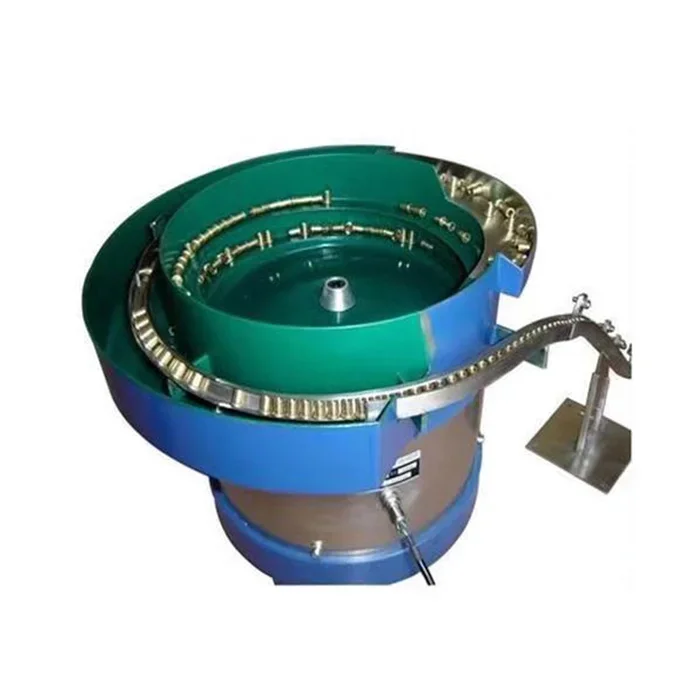Vibratory feeder bowls are widely used in the manufacturing industry to automate the feeding and orientation of small parts. These bowls are designed to vibrate at a high frequency, which causes the parts to move along the bowl's track and align themselves in the desired orientation. In this article, Youde will explore the working principle and manufacturing process of vibratory feeder bowls.

The Working Principle of Vibratory Feeder Bowls
The working principle of vibratory feeder bowls is based on the concept of resonance. When a vibrating object is subjected to an external force at its natural frequency, it vibrates with maximum amplitude. In the case of vibratory feeder bowls, the bowl is designed to vibrate at a frequency that matches the natural frequency of the parts being fed. This causes the parts to move along the bowl's track and align themselves in the desired orientation.
The vibratory feeder bowl consists of a bowl-shaped container, a base, and a vibrating unit. The container is mounted on the base and is designed to vibrate at a high frequency. The vibrating unit consists of an electromagnet and a spring system. The electromagnet is attached to the base and is used to generate a magnetic field. The spring system is attached to the container and is used to provide the necessary force to vibrate the container.
When the electromagnet is turned on, it generates a magnetic field that attracts the container towards it. As the container moves towards the electromagnet, the spring system is compressed, storing potential energy. When the electromagnet is turned off, the container moves away from the electromagnet due to the force of the spring system. This movement causes the container to vibrate at a high frequency, which in turn causes the parts to move along the bowl's track and align themselves in the desired orientation.
The Manufacturing Process of Vibratory Feeder Bowls
Vibratory feeder bowls are used in the manufacturing industry to sort and orient parts before they are assembled or processed. The manufacturing process of vibratory feeder bowls involves several steps, including designing, fabricating, and assembling the bowl.
1. Designing the Bowl
The first step in the manufacturing process is to design the bowl. This involves determining the size, shape, and orientation of the bowl to accommodate the parts being sorted. The design also includes the placement of the feeder tracks and the vibratory drive system.
2. Fabricating the Bowl
Once the design is complete, the bowl is fabricated from sheet metal using a stamping or spinning process. The sheet metal is cut to size and then formed into the desired shape using a press or spinning machine.
3. Adding the Feeder Tracks
The feeder tracks are then added to the bowl. These tracks are designed to guide the parts to the correct orientation as they move through the bowl. The tracks are typically made from stainless steel or aluminum and are attached to the bowl using screws or adhesive.
4. Installing the Vibratory Drive System
The vibratory drive system is then installed. This system consists of a motor, an eccentric weight, and a spring system. The motor drives the eccentric weight, which causes the bowl to vibrate. The spring system helps to control the vibration and ensures that the parts are sorted and oriented correctly.
5. Quality Control
Throughout the manufacturing process, rigorous quality control measures are implemented to ensure the vibratory feeder bowls meet the required specifications. Inspections, tests, and measurements are conducted to verify dimensional accuracy, track alignment, and overall functionality.
Vibratory feeder bowls are an essential component of the manufacturing industry, as they automate the feeding and orientation of small parts. The working principle of vibratory feeder bowls is based on the concept of resonance, and the manufacturing process involves several steps, including design, fabrication, assembly, and testing.
By understanding the working principle and manufacturing process of vibratory feeder bowls, manufacturers can ensure that they are using the most efficient and effective feeding and orientation system for their small parts.









Comments (0)